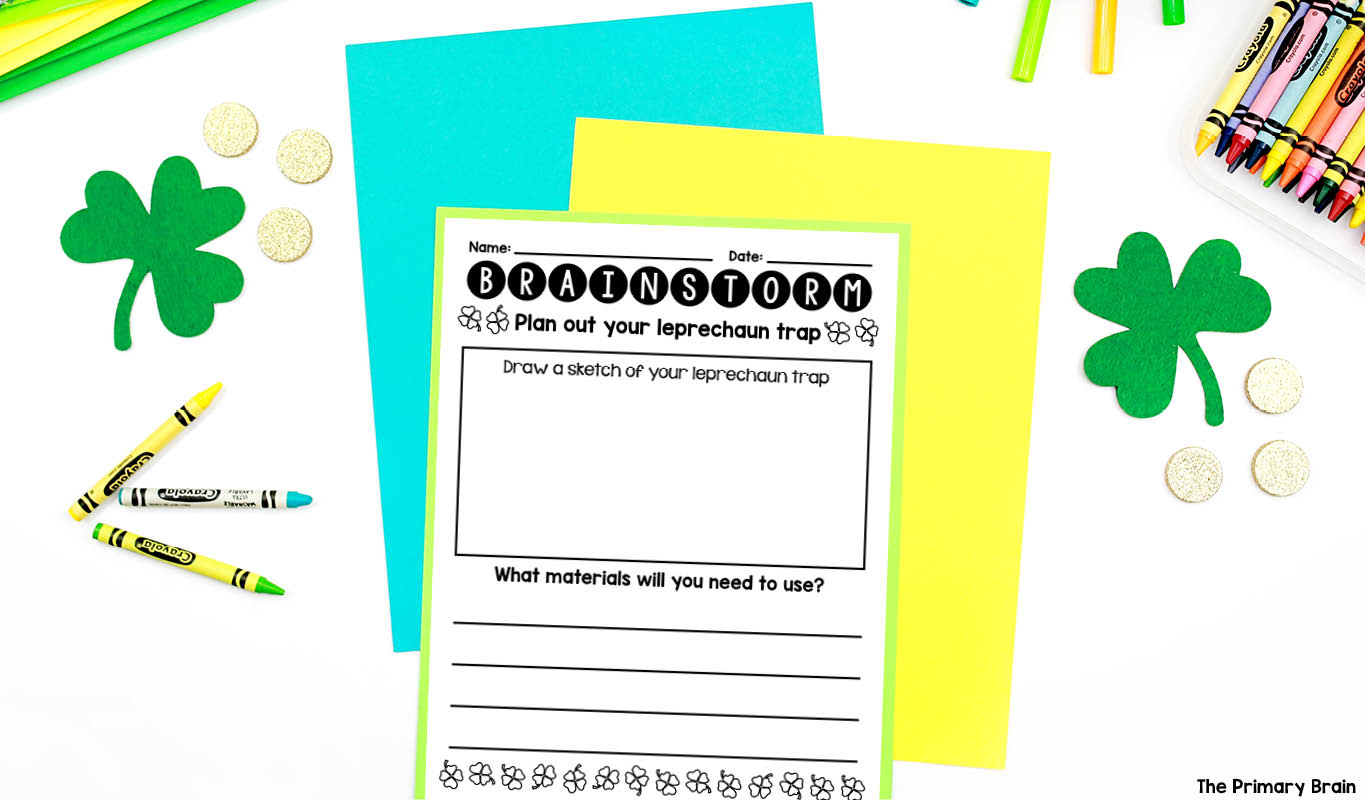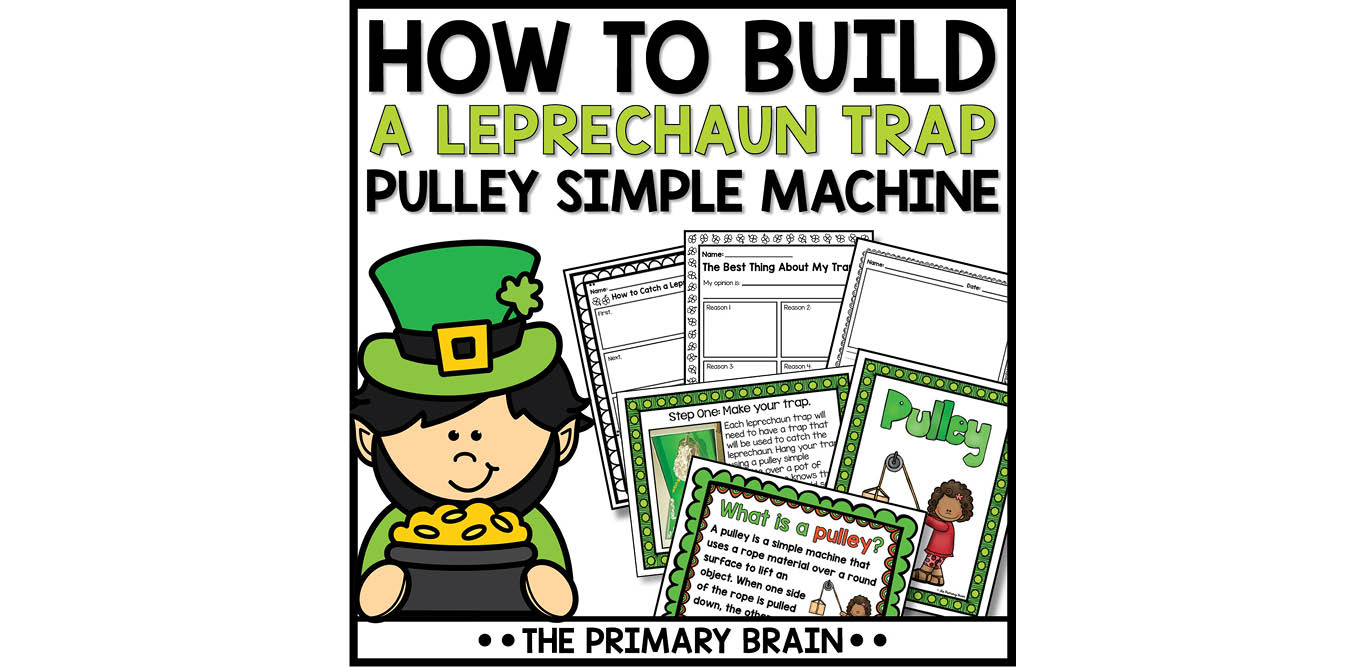How To Catch A Leprechaun STEM Project
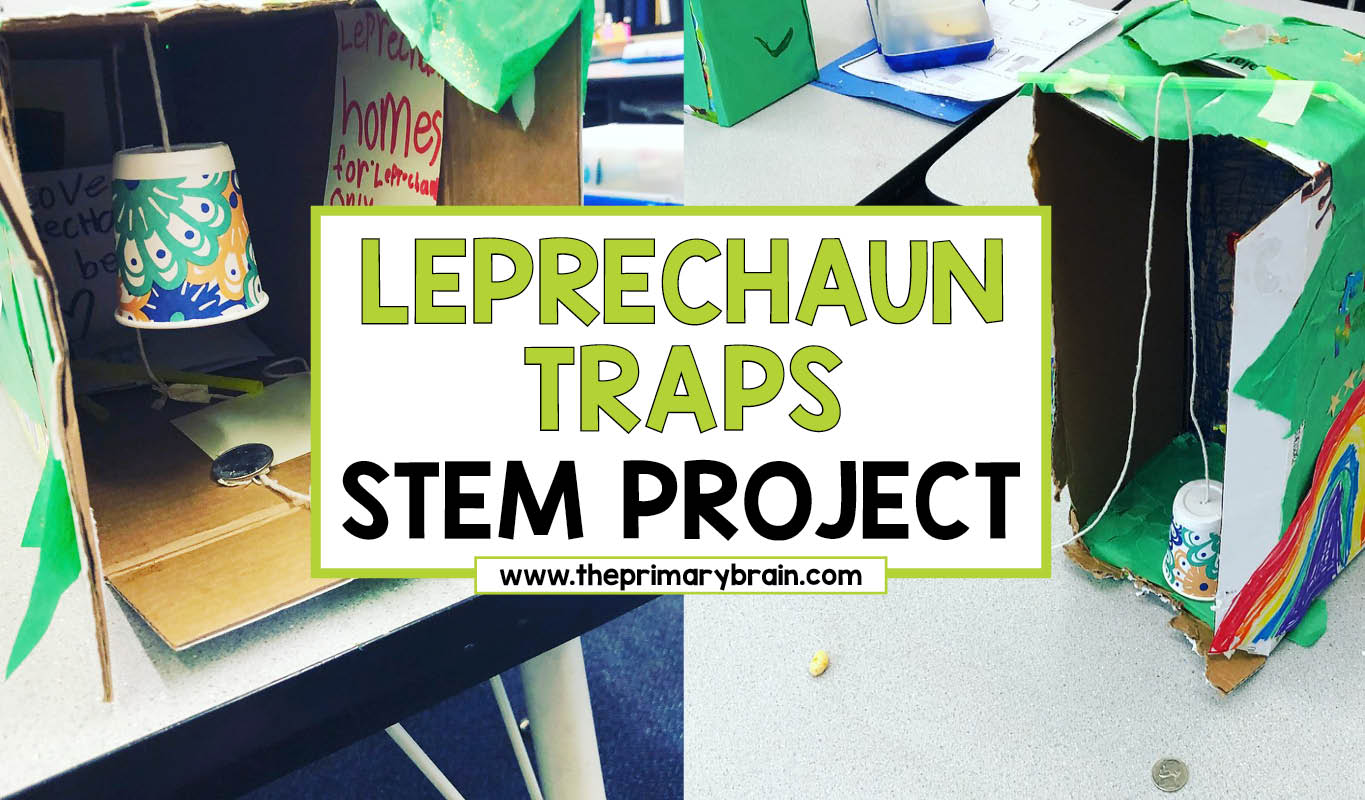
February isn’t even over yet, and our seven year old son is already brainstorming how he is going to try to catch that pesky leprechaun this year! First grade is such a fun age to incorporate seasonal themes like leprechauns into your lesson plans!
One of my favorite STEM challenges to do with my students is to build leprechaun traps at school! A couple years ago, we were learning about simple machines so we incorporated a pulley simple machine into our leprechaun traps. If you want to build leprechaun traps with your students, then keep reading for all the fun!
How to Build a Leprechaun Trap
First, you will want to put your students into groups. I usually put my students into groups of 3-4 students. Then, give each student a sheet to use to brainstorm how they build their leprechaun traps. Even though they are working together as a team, I still require each student to complete the brainstorming worksheet to ensure everyone is on task. You can find this brainstorming worksheet in my Leprechaun Trap STEM Project Unit.
Materials Management
Once students have finished brainstorming their traps, it’s time to begin to build! Since we are building a pulley simple machine, each student will need a box, string, tape, and cup to use to build the simple machine. Then, they can have additional decorations and seasonal items to use to finish off their leprechaun traps.
To keep the materials under control, I like to divide all student materials equally and place on trays that they can take to their stations. I usually just include the basics and then have a station where they can pick up decorations.
Here are my favorite materials to include:
- pipe cleaners
- ribbons
- gold coins
- colored papers
- markers
- dot markers
- KwikStix paints
- Any other seasonal items you find in the dollar spot!
I always send home a parent letter a week before this project requesting the materials we need to build the traps. If you want to use this parent letter in your class, just fill out this form and I will email it right over to you!
Set Those Traps and Catch a Leprechaun!
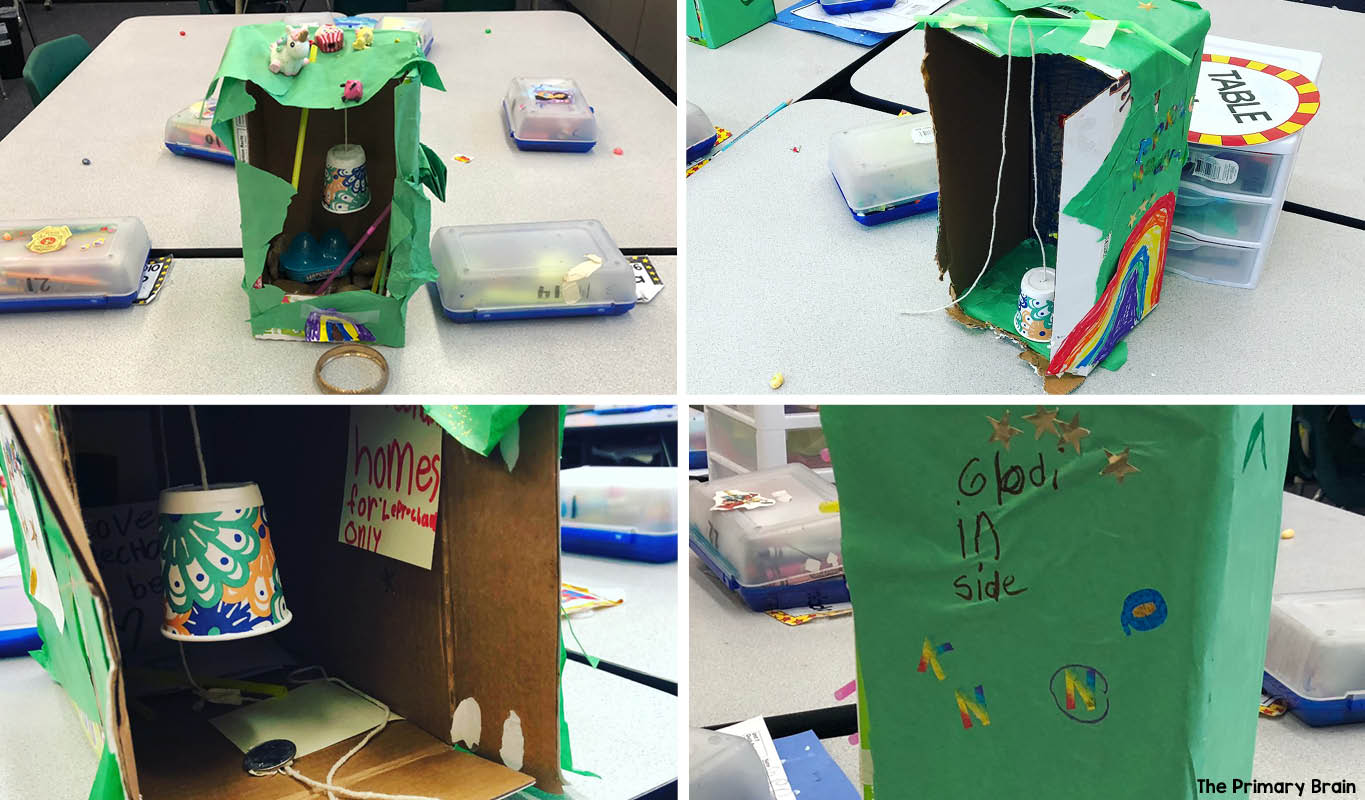
Once your students finish their leprechaun traps, you will want to store them until the night before St. Patrick’s Day! Then, before your kids leave school (or go to bed at home), make sure they set out all the parts of their leprechaun traps to try to catch that pesky leprechaun!
Now to Make a Mess!
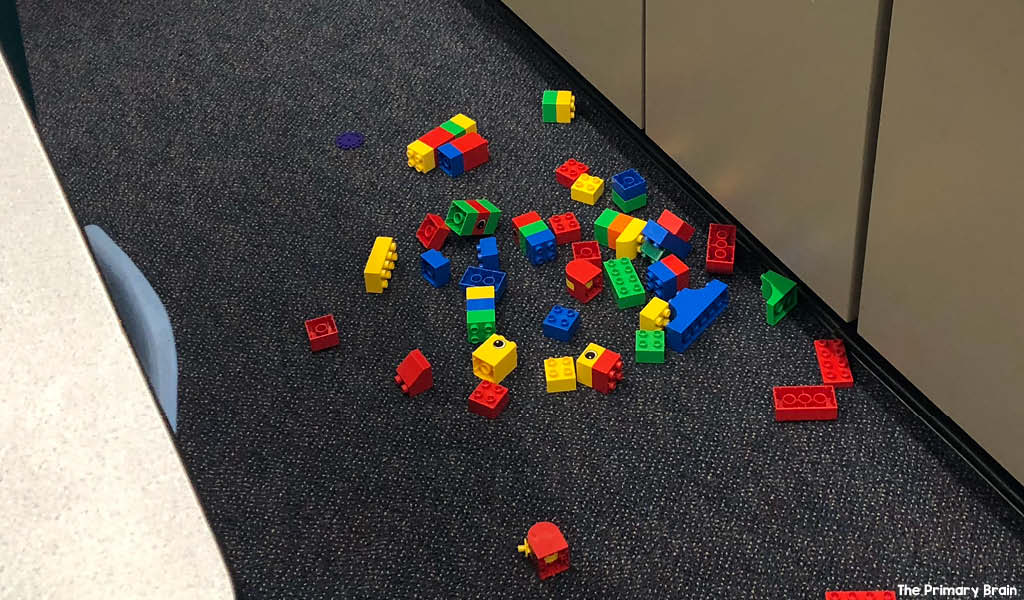
If you have ever read the book How To Catch a Leprechaun, then you probably already know just how sneaky these pesky little leprechauns can be! Despite setting the best traps they could, my students have never actually caught a leprechaun. BUT, to add some fun to our morning, I always make it look like the leprechaun outsmarted them all. I love to set off all the traps, leave green “footprints” on the desks, take the gold coins, spill items on the floor, turn chairs upside down, and anything else that can make it look like a leprechaun came through the room.
Writing Activities for St. Patrick’s Day
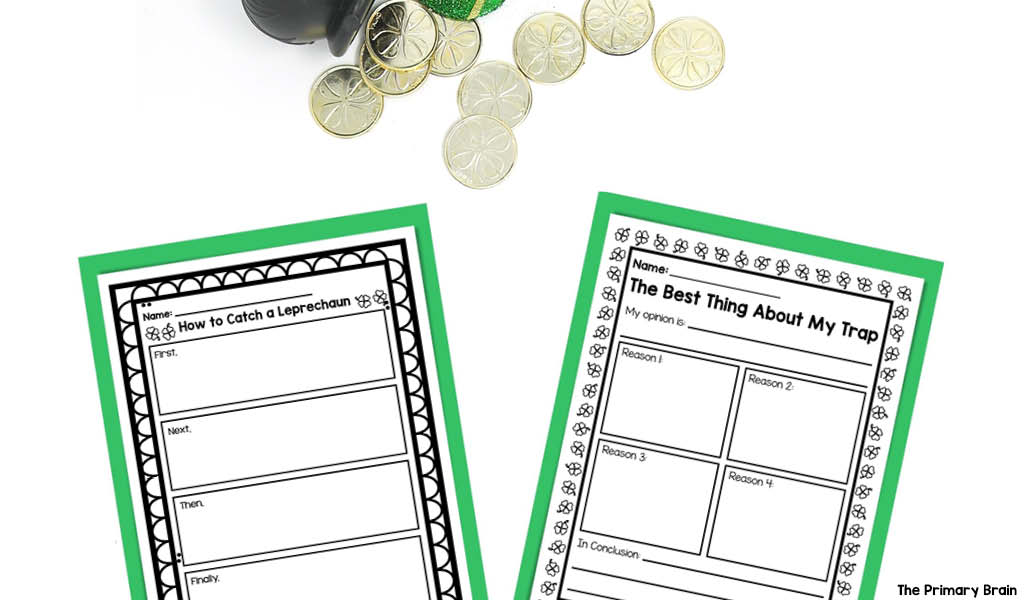
I always have my students help clean up the mess the leprechaun left behind. It’s a great way to have them take ownership of our classroom and their space.
Then, it’s the perfect time to break out the writing pages from our Leprechaun Trap STEM Project Unit. There are graphic organizers and formal writing pages to help them reflect on the learning that took place. They can reflect on their opinions, what did or did not go well on their traps, or anything else you want your students to write about. Plus, it’s a great way to help calm down some excited students after they find that their traps did not work as they had hoped!
If you want to grab all the fun in this unit, then grab my Leprechaun Trap STEM Project Unit and make planning easy this year! If you make traps with your class, I would love to see them and your messy classrooms! Just tag me on Instagram @theprimarybrain and let me see all the fun you have on St. Patrick’s Day!

This post may contain Amazon affiliate links. I earn a small commission each time someone makes a purchase through one of my affiliate links, which helps to support The Primary Brain blog. As always, I only recommend products that I love and all ideas shared are my own.
Written on February 25th, 2023 by Laurin Brainard
